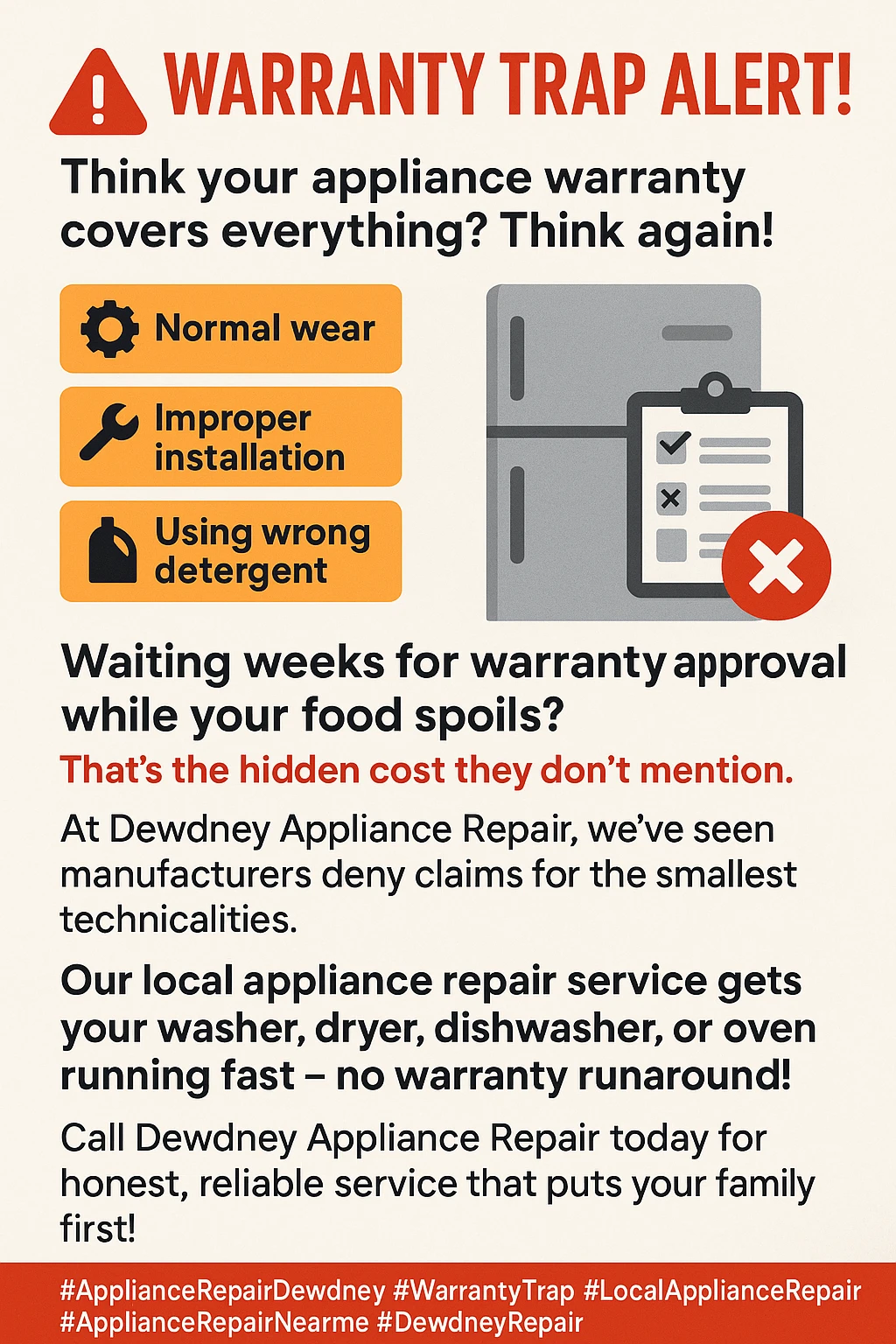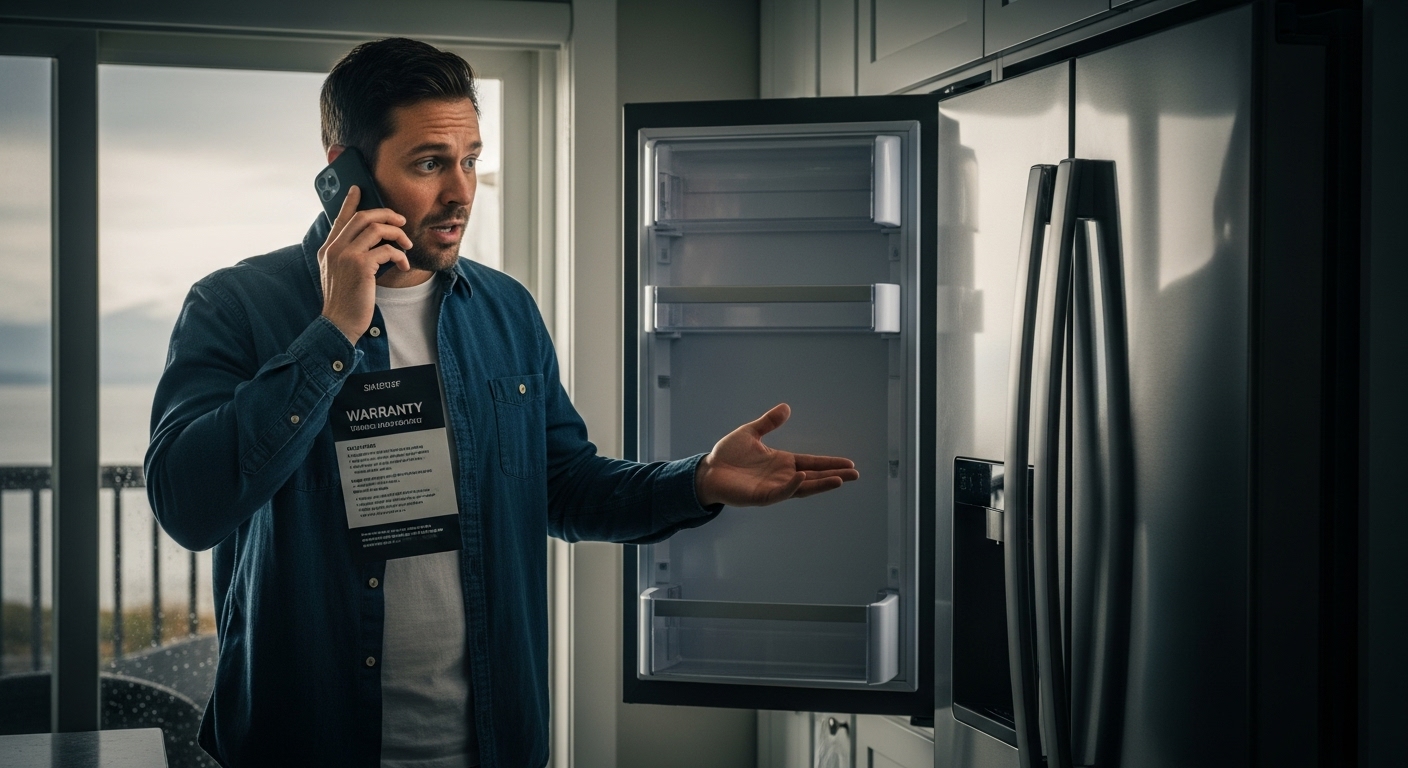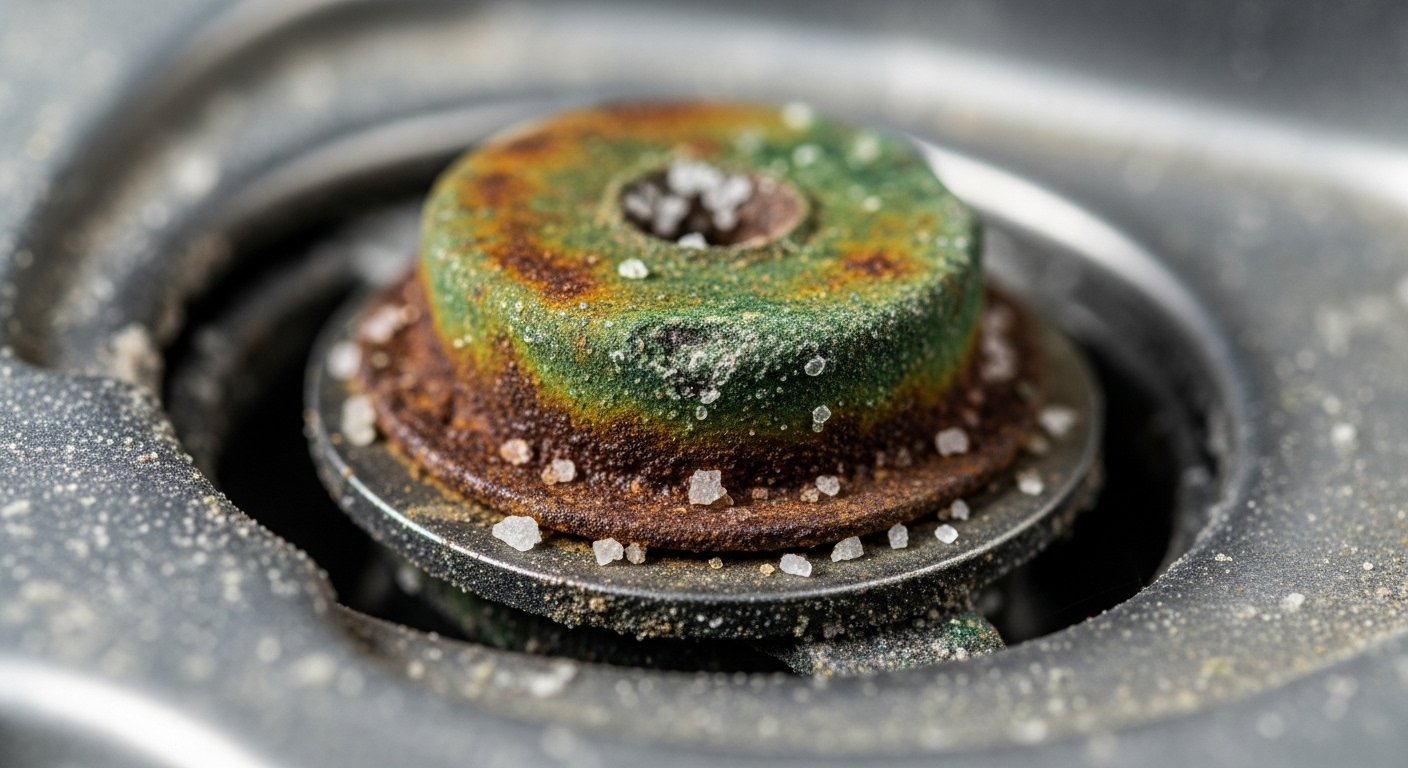The Appliance Warranty Trap: What Your Manufacturer Really Covers (And the Loopholes That Could Cost You Thousands)
Dealing with a broken appliance and wondering if your warranty will actually cover the repair costs? You’re about to discover the shocking truth about appliance warranty coverage in Dewdney and why that “comprehensive protection” might leave you paying thousands out of pocket anyway.Picture this: your refrigerator starts making weird noises on a sweltering summer day, and you breathe a sigh of relief remembering that fancy extended warranty you bought. Fast forward two weeks, and you’re still eating takeout while warranty representatives debate whether your claim qualifies as “normal wear and tear” or an actual covered defect. Sound familiar? You’re not alone – this scenario plays out in thousands of homes across Dewdney and Mission every year.The harsh reality is that appliance warranties, whether manufacturer-issued or extended plans, are designed more to protect the company’s profits than your wallet. While they promise peace of mind, most warranties are riddled with exclusions, limitations, and loopholes that can leave you scrambling for repair funds when you need coverage most. Understanding these traps isn’t just about saving money – it’s about making informed decisions that actually protect your home and budget.What makes this even more challenging for residents in coastal areas like Dewdney is that our unique climate conditions can accelerate appliance wear in ways that warranties specifically exclude. Salt air, humidity fluctuations, and seasonal usage patterns create the perfect storm for warranty claim denials, leaving homeowners with expensive repair bills they thought they’d avoided.
Key Outtakes
- Manufacturer warranties typically last only 1 year and exclude common issues like wear and tear, accidental damage, and environmental factors that are especially relevant in coastal BC
- Extended warranties cost an average of $126 for large appliances but studies show they provide minimal value compared to setting aside repair funds
- 40% of warranty claims are denied or delayed due to documentation issues, missing maintenance records, or exclusions that most homeowners don’t understand
- Home warranty plans cost $500-600 annually plus service fees, yet emergency repairs can still take weeks even during extreme weather conditions
- The “50% replacement rule” suggests that if repair costs exceed half the appliance’s current value, replacement is more economical than fixing

What Your Manufacturer’s Warranty Actually Covers
 When you unbox that shiny new dishwasher or refrigerator, the included warranty documentation probably makes you feel pretty secure about your investment. Unfortunately, most homeowners never actually read the fine print until they’re dealing with a broken appliance and a hefty repair estimate. Here’s what you need to know about the reality behind manufacturer warranty coverage in Dewdney and throughout BC.Most home appliances come with only a one-year manufacturer warranty that covers defects in materials and workmanship. This means if your appliance fails due to a manufacturing flaw within the first year, you’re typically covered for both parts and labor. However, the key phrase here is “manufacturing flaw” – a much narrower category than most people realize.The warranty protection is also limited to the original owner who made the purchase. If you bought your home from someone who recently installed new appliances, those warranties likely aren’t transferable to you as the new homeowner. This creates a common misconception where new homeowners assume they have warranty protection on relatively new appliances, only to discover they’re responsible for repair costs.Commercial use restrictions also catch many homeowners off guard. If you run a home-based business that involves heavy appliance use, or you rent out your property as a vacation rental, warranty coverage may be voided due to “commercial use” clauses. Even something as simple as running a home daycare that requires frequent dishwasher or laundry use could potentially void your coverage.The geographic limitations can also impact residents in remote areas around Dewdney and Mission. Some manufacturers require repairs to be performed by authorized service providers, but if the nearest authorized technician is hours away, you might face significant delays or additional charges that the warranty doesn’t cover.
When you unbox that shiny new dishwasher or refrigerator, the included warranty documentation probably makes you feel pretty secure about your investment. Unfortunately, most homeowners never actually read the fine print until they’re dealing with a broken appliance and a hefty repair estimate. Here’s what you need to know about the reality behind manufacturer warranty coverage in Dewdney and throughout BC.Most home appliances come with only a one-year manufacturer warranty that covers defects in materials and workmanship. This means if your appliance fails due to a manufacturing flaw within the first year, you’re typically covered for both parts and labor. However, the key phrase here is “manufacturing flaw” – a much narrower category than most people realize.The warranty protection is also limited to the original owner who made the purchase. If you bought your home from someone who recently installed new appliances, those warranties likely aren’t transferable to you as the new homeowner. This creates a common misconception where new homeowners assume they have warranty protection on relatively new appliances, only to discover they’re responsible for repair costs.Commercial use restrictions also catch many homeowners off guard. If you run a home-based business that involves heavy appliance use, or you rent out your property as a vacation rental, warranty coverage may be voided due to “commercial use” clauses. Even something as simple as running a home daycare that requires frequent dishwasher or laundry use could potentially void your coverage.The geographic limitations can also impact residents in remote areas around Dewdney and Mission. Some manufacturers require repairs to be performed by authorized service providers, but if the nearest authorized technician is hours away, you might face significant delays or additional charges that the warranty doesn’t cover.
The Hidden Exclusions That Could Cost You Thousands
 Understanding what’s NOT covered by your appliance warranty is often more important than knowing what is covered, especially when you’re dealing with the unique challenges of coastal living in British Columbia. These exclusions are where warranty companies save money and where homeowners get blindsided by unexpected repair bills.Normal wear and tear represents the biggest exclusion gap in appliance warranty coverage. Warranties don’t cover natural degradation like fading, scratches, gradual performance decline, or components that simply wear out from regular use. In a coastal environment like Dewdney, this exclusion becomes particularly problematic because salt air accelerates the aging process of metal components, seals, and electronic parts. What might be considered normal wear elsewhere happens much faster here, yet it’s still excluded from coverage.Consumable parts create another major coverage gap that catches homeowners off guard. Items like water filters, light bulbs, batteries, drive belts, and gaskets are typically excluded from warranty coverage because they’re designed to be replaced regularly. The problem is that when a consumable part fails, it can often cause damage to other components that should be covered, but warranty companies may deny the entire claim by arguing the damage originated from an excluded part.Environmental damage exclusions are especially relevant for coastal residents. Salt air corrosion, humidity-related electrical failures, and damage from extreme weather events are typically excluded as “acts of nature” or environmental factors. This means that the very conditions that make appliances more likely to fail in our area are specifically excluded from coverage.Improper installation and maintenance violations void warranties faster than any other factor. This includes having repairs performed by non-authorized technicians, failing to follow cleaning schedules, not replacing filters on schedule, or attempting any DIY maintenance beyond basic cleaning. Many warranty companies require detailed maintenance records to process claims, and missing documentation can result in immediate claim denial.Power-related damage from electrical surges, brownouts, or voltage fluctuations is often excluded unless caused by a specific covered component failure. In areas with aging electrical infrastructure or frequent power fluctuations, this exclusion can leave you responsible for expensive electronic component repairs that seem like they should be covered.
Understanding what’s NOT covered by your appliance warranty is often more important than knowing what is covered, especially when you’re dealing with the unique challenges of coastal living in British Columbia. These exclusions are where warranty companies save money and where homeowners get blindsided by unexpected repair bills.Normal wear and tear represents the biggest exclusion gap in appliance warranty coverage. Warranties don’t cover natural degradation like fading, scratches, gradual performance decline, or components that simply wear out from regular use. In a coastal environment like Dewdney, this exclusion becomes particularly problematic because salt air accelerates the aging process of metal components, seals, and electronic parts. What might be considered normal wear elsewhere happens much faster here, yet it’s still excluded from coverage.Consumable parts create another major coverage gap that catches homeowners off guard. Items like water filters, light bulbs, batteries, drive belts, and gaskets are typically excluded from warranty coverage because they’re designed to be replaced regularly. The problem is that when a consumable part fails, it can often cause damage to other components that should be covered, but warranty companies may deny the entire claim by arguing the damage originated from an excluded part.Environmental damage exclusions are especially relevant for coastal residents. Salt air corrosion, humidity-related electrical failures, and damage from extreme weather events are typically excluded as “acts of nature” or environmental factors. This means that the very conditions that make appliances more likely to fail in our area are specifically excluded from coverage.Improper installation and maintenance violations void warranties faster than any other factor. This includes having repairs performed by non-authorized technicians, failing to follow cleaning schedules, not replacing filters on schedule, or attempting any DIY maintenance beyond basic cleaning. Many warranty companies require detailed maintenance records to process claims, and missing documentation can result in immediate claim denial.Power-related damage from electrical surges, brownouts, or voltage fluctuations is often excluded unless caused by a specific covered component failure. In areas with aging electrical infrastructure or frequent power fluctuations, this exclusion can leave you responsible for expensive electronic component repairs that seem like they should be covered.
Extended Warranties: Marketing Trap or Smart Investment?
 Walk into any appliance store, and you’ll be offered an extended warranty before you finish signing your purchase paperwork. Sales staff make these protection plans sound essential, but the financial reality tells a very different story that most Dewdney residents would be shocked to learn.Consumer Reports research reveals that extended warranties cost an average of $126 for large appliances, yet the average repair savings they provide is only about $100 over the life of the plan. When you factor in the restrictions, service fees, and claim denial rates, most consumers actually lose money on extended warranty purchases. The $40 billion extended warranty industry exists primarily because these plans are highly profitable for retailers and warranty companies, not because they provide exceptional value to consumers.The overlap between manufacturer warranties and extended coverage creates another value problem. Many extended warranties don’t actually extend your coverage – they just duplicate what you already have during the first year or two. Some plans don’t even begin coverage until after the manufacturer warranty expires, which means you’re paying for protection you won’t be able to access for months or even years after purchase.Service quality issues plague many extended warranty programs. About one in five consumers who use extended warranties report dissatisfaction with repairs, and service often requires multiple service calls to complete simple fixes. This is particularly problematic in smaller communities like Mission, where authorized service providers may be limited and response times can stretch for weeks.Provider network limitations create logistical headaches that warranty sales staff rarely mention upfront. Extended warranties often require you to use specific repair shops within their network, which may not include convenient local options. If the nearest authorized provider is a two-hour drive away, you’ll still need to arrange transportation and potentially sacrifice work time, even though you’ve paid for “convenient” warranty coverage.The claims process itself can be more complicated than paying for repairs outright. Extended warranty companies often require pre-authorization for repairs, detailed documentation of the problem, and proof that you’ve followed all maintenance requirements. This bureaucratic process can add days or weeks to emergency repair situations where you need your appliances working immediately.
Walk into any appliance store, and you’ll be offered an extended warranty before you finish signing your purchase paperwork. Sales staff make these protection plans sound essential, but the financial reality tells a very different story that most Dewdney residents would be shocked to learn.Consumer Reports research reveals that extended warranties cost an average of $126 for large appliances, yet the average repair savings they provide is only about $100 over the life of the plan. When you factor in the restrictions, service fees, and claim denial rates, most consumers actually lose money on extended warranty purchases. The $40 billion extended warranty industry exists primarily because these plans are highly profitable for retailers and warranty companies, not because they provide exceptional value to consumers.The overlap between manufacturer warranties and extended coverage creates another value problem. Many extended warranties don’t actually extend your coverage – they just duplicate what you already have during the first year or two. Some plans don’t even begin coverage until after the manufacturer warranty expires, which means you’re paying for protection you won’t be able to access for months or even years after purchase.Service quality issues plague many extended warranty programs. About one in five consumers who use extended warranties report dissatisfaction with repairs, and service often requires multiple service calls to complete simple fixes. This is particularly problematic in smaller communities like Mission, where authorized service providers may be limited and response times can stretch for weeks.Provider network limitations create logistical headaches that warranty sales staff rarely mention upfront. Extended warranties often require you to use specific repair shops within their network, which may not include convenient local options. If the nearest authorized provider is a two-hour drive away, you’ll still need to arrange transportation and potentially sacrifice work time, even though you’ve paid for “convenient” warranty coverage.The claims process itself can be more complicated than paying for repairs outright. Extended warranty companies often require pre-authorization for repairs, detailed documentation of the problem, and proof that you’ve followed all maintenance requirements. This bureaucratic process can add days or weeks to emergency repair situations where you need your appliances working immediately.
Home Warranty Plans: Annual Coverage with Annual Headaches
Home warranty plans promise comprehensive protection for multiple appliances and systems throughout your home, but the reality of living with this coverage often differs dramatically from the marketing materials. These plans have become increasingly popular in real estate transactions and among homeowners looking for budget predictability, yet they come with their own set of frustrations and limitations.The cost structure of home warranty plans creates immediate budget impact beyond the advertised monthly fees. While plans may cost $500-600 annually, you’ll also pay service fees ranging from $75-125 for each service call, which can add up quickly if you have multiple issues.

